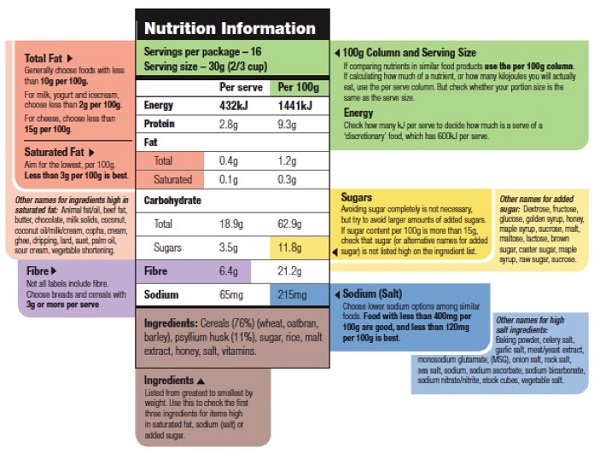
Fat-free, sugar-free, superfood, nutrient extractor? You’ve got to hand it to the marketing guru’s, they know how to catch your eye when choosing a food product! What they don’t often tell you is the other important parts of the food and what it’s made up of. That’s where food label reading is an important skill, so you can choose the best option possible. I know there are people who say you shouldn’t need to know how to label read as everything you eat shouldn’t be packaged and therefore not require a nutrition label, but let’s be realistic here. There are always items you want to purchase that come in a packet or can!
What to look for when food label reading
So what should you be looking out for when reading a nutrition label? The key 5 food label reading elements are:
- the total fat
- saturated fat
- sugar
- sodium and;
- fibre content of foods
It’s also important to check the ingredient list. The ingredients listed first have the highest content in the food, so if sugar is the first ingredient then you can safely assume the food isn’t going to provide you with much nutritionally.
 Guidelines for nutritional content
Guidelines for nutritional content
Use these guidelines when reading your nutrition label, and remember to use the per 100g column, especially when comparing products as serving sizes can be different amounts!
- Total fat: ideally less than 10g per 100g.
- Saturated fat: ideally less than 3g per 100g is ideal!
- Sugar: try to keep it below 15g sugar per 100g and check where sugar is on the list of ingredients
- Sodium: less than 400mg per 100g is good but less than 120mg per 100g is best!
- Fibre: try to find a product with more than 3g per serve (not per 100g)
Go forth and shop!
Knowing how to read the nutrition information on packaged foods is very empowering. Food label reading helps you understand the real deal when it comes to your food. As you may find, the reality may be entirely different from the marketing messages on the front.
